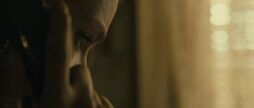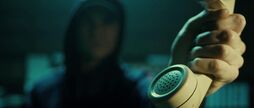In 1994, a 13-year-old boy from Texas went missing on his way home. Three and a half years later, his family thought he was dead. News comes from Spain about a boy claiming to be the missing Nick. Nick's sister, Carly, came to Spain to bring him back home to Texas. In fact, this guy is a liar and doesn't look like Nick at all. But the Nick family has so misunderstood the child. why? Fake Nick, the liar who said that Nick's family accepted him, there must be an unspeakable reason, that is, their family had killed Nick. In order to hide people's eyes and ears, they will be wrong. In the end, of course, there is no evidence that Nick was killed by his family. This is pure liar.
Bart Layton's "The Impostor" is not well-known, and very few people have seen it. In fact, Youku has the whole film to watch. I watched this movie during the summer vacation. In order to write it, I had to watch it again. Hey, watching a movie is a waste of time.
The Impostor is basically a full-length interview that looks like a documentary, but is actually more of a feature film. The design of the crook looking directly at the camera in this movie is very unique, let me tell you.
Looking directly at the camera is when the character speaks directly to the audience. Generally speaking, this lens is mostly used in news broadcasts. The characters in some documentaries also look directly at the camera and let the characters speak directly to the audience.
In feature films, the direct-view camera is rarely used. Stories tend to be self-contained closed structures, with characters living comfortably in their assumed world and assuming that the audience does not exist. Looking directly at the camera destroys the assumed truth. For example, in the bed scene in the movie, the two men and women are in love. Even though there may be dozens of staff members at the shooting site, the filming is to show more audiences, but the actor's performance is to pretend all this. None exist. If the characters suddenly look directly at the camera and talk to the audience when they are having sex, it will terrify some functions of the audience.
Here involves a concept, viewpoint. The picture of the movie is sometimes from the omniscient point of view, sometimes it is the point of view of the characters. The omniscient viewpoint is the scene presented in the movie, and no character is watching; the character viewpoint is to show the audience the picture along the character's eyes. Gordon Willis, the photographer of The Godfather, insisted that each camera should represent a character's point of view. For example, when the audience sees Marlon Brando, it must be because a character in the movie is watching him. Of course, it's almost impossible to stick to the character's point of view so thoroughly. Coppola is said to have persuaded Willis to film some omniscient viewpoints as well.
Therefore, the liar in "The Impostor" looks directly at the camera, that is, talking to the audience. In this film, this lens design is very special. Others are also speaking, but obviously from the point of view of the character, even though that character is not on the screen, because following the character's line of sight, we know that there is an interviewer outside the painting. So, while the other characters are speaking, they are not speaking directly to the audience.
In addition, other characters have a clear spatial background, and people are interviewed in real space (as can be seen from the pictures); only the liar is extracted, and the background is completely blurred.
The director is to remind the audience that this person is unique, false, and unreal. The general audience may turn a blind eye to this design, but it doesn't matter, the film presents a sense of unity; on the contrary, if the lens is not designed, the audience will see it.
This is of course the ingenuity of the director. So why did the director design the shots like this? Does it help the film's narrative in any way? The answer is yes. From the very beginning, the audience already knows that the impostor is a liar. The liar is explaining his motives and building trust with the audience. Of course, trust is not so easy to build. Because the director also interspersed and edited the interviews of Nick's family, so that their accounts were compared with each other, proving that the liars were all lies. However, the beauty of the movie is that even if we don't believe the liar at all, we will still be led into a huge question: How could an impostor who doesn't look like Nick deceive Nick's mother and sister?
Obviously because the Nick family is willing to be deceived. - This conclusion was told by the liar to the audience. So, we know he was a liar, or was duped by a liar, because he made an assumption that seemed plausible beyond rebuttal.
We can seem to see the director's narrow smile. He has clearly distinguished the liar by looking directly at the camera, but the audience is still deceived. Isn't this more dramatic? All of us were tricked by liars, oh no, by the director. The design of looking directly at the camera allows the audience to accept the words of the liar unconsciously and without thinking. This is probably related to the fact that this camera is often used in news broadcasts, and we rarely doubt the anchor.
Bart Layton recently used the same technique for a new film, American Animals, which I saw and wasted another time. The direct-view camera of "American Animals" is an embarrassing existence, which not only does not add points to the narrative, but also greatly reduces the points. Because "American Animals" is a feature film, it's completely unsuitable for direct-view shots. In my opinion, the use of the direct-view camera is limited and can't be abused, except in a comedy that is intentionally slapped.
Xu Anhua also made the characters look directly at the camera and speak to the audience in "The Golden Age", making documentaries not like documentaries and feature films not like feature films, and many audiences did not recognize them. So when it came to "When is the Bright Moon", although Xu Anhua didn't give up, he didn't insist any longer, but let Liang Jiahui tell everyone a story. Although he also looked directly at the camera, he was only a storyteller, and he didn't actually participate in the closed story that followed, so it wasn't that embarrassing.
Therefore, although the direct-view lens of "The Impostor" is well used, it is only an example. The closed and self-contained state of the story cannot be broken casually. A story like "The Impostor" is not a story in the traditional sense. It uses the form of a documentary and is actually a story of a liar telling the story to the audience. The story cannot be a story without the participation of the audience.
After reading it, you can add WeChat public account: Movie Pull Room
View more about The Imposter reviews











